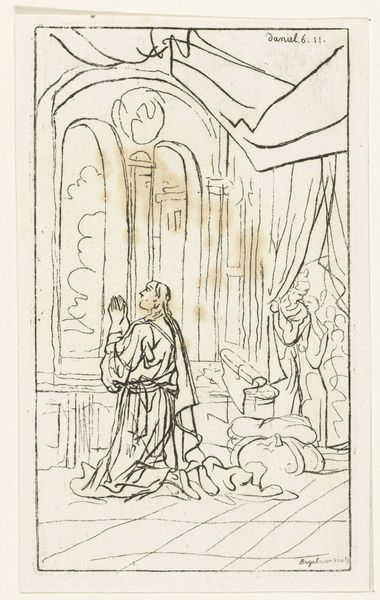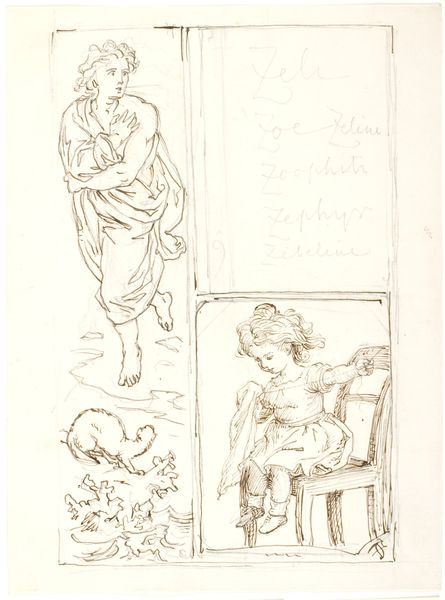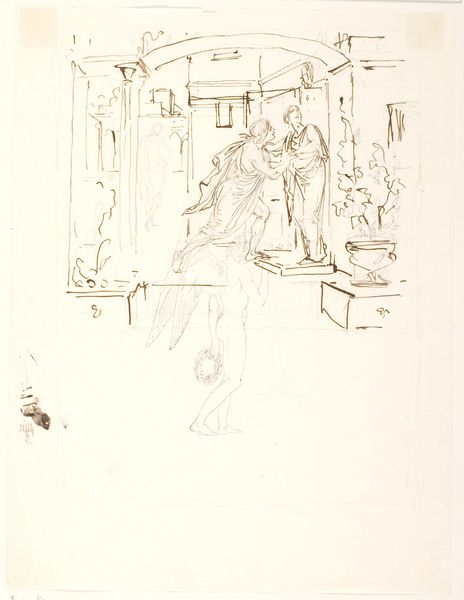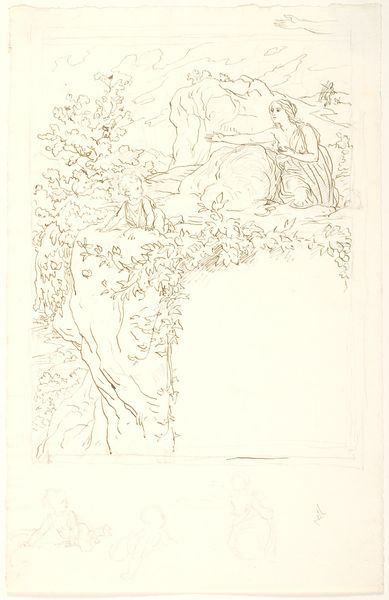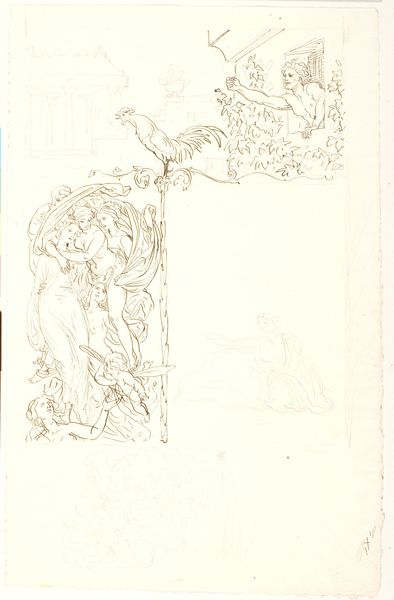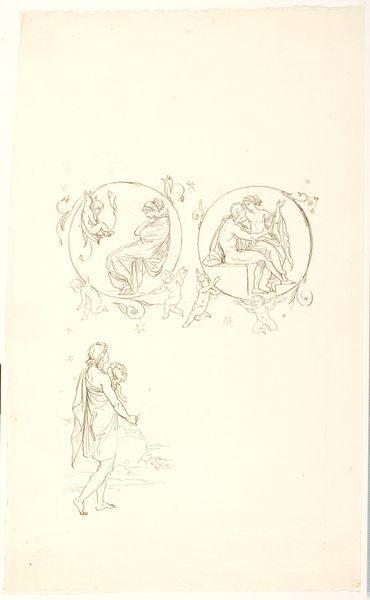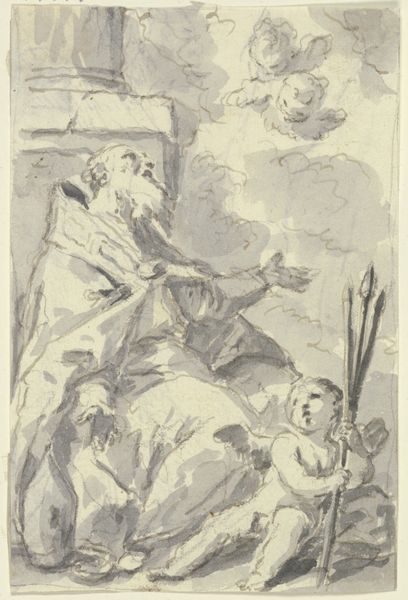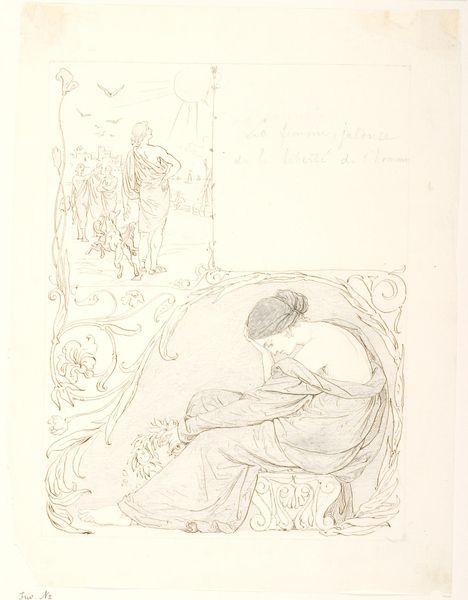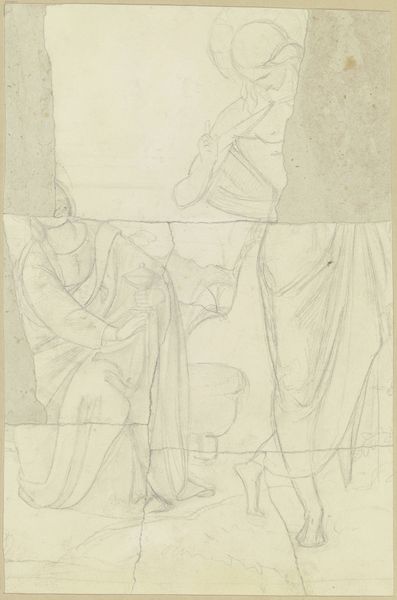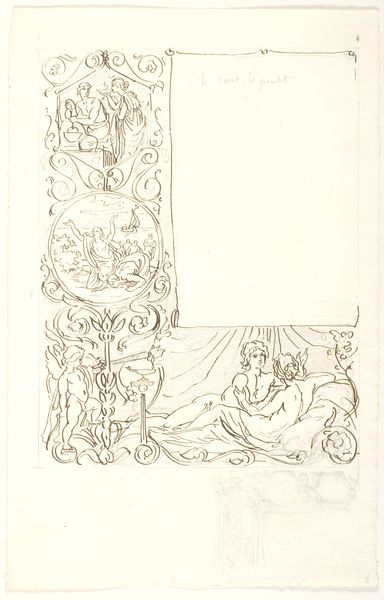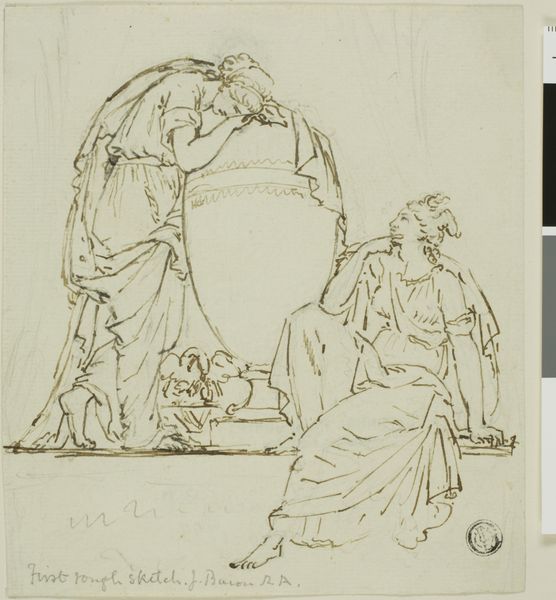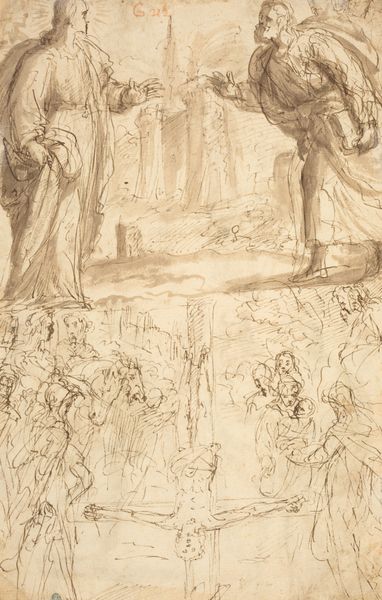
Dimensions: 308 mm (height) x 192 mm (width) (bladmaal)
Curator: Look closely at Lorenz Frølich’s 1860 pen and ink drawing, "Kvinden, der misunder manden hans frihed"—"The Woman Who Envies the Man His Freedom". Editor: The delicacy of the lines strikes me first. It’s quite pale; almost like a ghost of an image. It carries a heavy feeling of pensiveness, maybe even melancholy, with these draped figures caught in intimate moments. Curator: Precisely. Frølich’s choice of medium and light touch lends itself to the intimacy and the rawness of the subject, which can be viewed through the lens of romanticism with themes of longing and human experience. He uses these fine lines to explore gender roles and social expectations within the bourgeois domestic sphere in Denmark at that time. Editor: The way the pen creates those textures really brings a textural dimension into play, almost sculpting these characters in the very act of drawing. How does Frølich’s draftsmanship influence the narrative weight? The contrast with other styles of the era, the looser and finer lines here evoke different qualities to those found with say thicker marks found in works by his French counterparts. Curator: Well, I would suggest that his choices directly implicate how we view artistic labor and freedom itself, the very theme of the drawing, through gendered eyes. Who has access to the public space of making, showing, and circulating work at this time? And what expectations define the domestic role of bourgeois women? The drawing performs the artist's labour and thinking, becoming both object and content here, blurring boundaries, and expanding our reading of the work. Editor: You see the drawing's pale and delicate lines in an effort to emphasize class, gender, and labour, but when looking closely I focus on composition: The weight of the figure’s pose, her downcast face, the careful delineation of drapery, these stylistic features guide my eye and tell a story independent of those social implications you describe. Curator: I concede that those qualities contribute, though the social and historical conditions framing its production are critical to fully grasp its emotional force. We can appreciate both, surely. Editor: Agreed. We have to give Frølich credit for how much visual information, not to mention emotion, is conveyed in this sparse but compelling ink drawing. Curator: Yes, by unpacking his methodology and what that shows us. Editor: I concur; I enjoyed the opportunity to examine the piece in detail.
Comments
No comments
Be the first to comment and join the conversation on the ultimate creative platform.
